You'll dramatically extend your natural perfume's longevity by incorporating wild oakmoss (Evernia prunastri) as a fixative. Start with a 40% base note ratio, including oakmoss, then blend with middle notes (40-50%) and top notes (10-20%). Apply to well-moisturized skin at pulse points, and store your creation in dark bottles away from heat and light. For the most potent results, let your blend mature for at least a week. Discover the ancient secrets of this powerful botanical fixative to reveal your signature scent.
The Magic of Wild Oakmoss in Natural Perfumery

Nature's most enchanting fragrance ingredients, wild oakmoss (*Evernia prunastri*), emerges from the symbiotic dance between fungi and algae on tree bark across Europe and North America.
You'll discover its rich, earthy aroma mirrors the essence of damp forest floors, complete with hints of decaying leaves and honey-like undertones. As a natural fixative, oakmoss helps extend the longevity of other fragrance notes when blended into perfumes.
What makes oakmoss truly magical is its incredible staying power in perfumery.
When you blend it with other natural ingredients like sandalwood or vetiver, you're working with a scent profile that's been cherished since ancient Egypt, where it graced royal tombs alongside myrrh and pine resin.
Its role in classic chypre fragrances, paired with bergamot and labdanum, showcases why it's become a cornerstone of natural perfumery, offering an unmatched depth and complexity to your creations.
Understanding Oakmoss as a Natural Fixative
When exploring natural fixatives in perfumery, oakmoss stands out as one of the most effective ingredients for anchoring volatile scents.
You'll find this unique lichen's fixative properties help extend your perfume's longevity while adding a rich, earthy undertone to your blend.
As a base note, oakmoss delivers these key benefits to your natural perfumes:
- Slows down the evaporation of other fragrance ingredients
- Creates a smooth, grounding foundation for citrus and floral notes
- Adds depth with its complex wood and moss-like scent profile
- Works exceptionally well in chypre and oriental fragrances
When working with oakmoss absolute, remember to use IFRA-compliant versions that meet safety standards. The absolute is primarily extracted from Evernia prunastri lichen found growing on oak trees in France.
You'll want to properly dilute this concentrated ingredient while taking advantage of its remarkable ability to transform fleeting top notes into long-lasting fragrances.
Harvesting and Preparing Wild Oakmoss
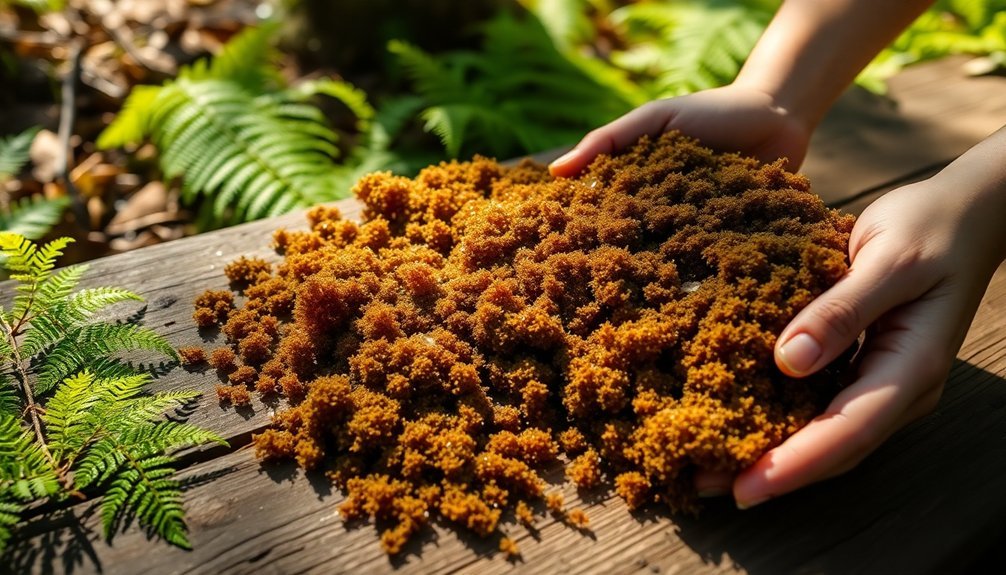
Learning to harvest wild oakmoss requires careful attention to both identification and conservation practices. Look for its distinctive pale, sagey green color and flat, straplike thallus growing on oak, pine, or fir trees.
You'll want to harvest only when it's abundantly present, as it grows just 3-11mm annually. Similar to moss harvesting techniques, it's best to collect oakmoss after rainfall when the specimens are damp and pliable.
When collecting, cut only the tips to allow regeneration, and work gently to avoid damaging the structure.
Once you've gathered your oakmoss, clean it thoroughly by removing bark and debris, then rinse with water.
Pat it dry with a kitchen towel before storing in an airtight container in a cool, dry place.
If you're planning to extract its essential oils, you'll need to use proper solvents while following safety protocols and wearing protective gear.
Essential Blending Ratios for Long-Lasting Scents
Creating a long-lasting natural perfume starts with understanding the essential ratios between base, middle, and top notes. When using wild oakmoss as your base note, you'll want to blend it with other essential oils in specific proportions for ideal results.
For a well-balanced, enduring fragrance, follow these key ratios:
- Base notes (including oakmoss): 40% of your blend
- Middle notes: 40-50% of the total mixture
- Top notes: 10-20% for initial impact
- Carrier oil: Dilute according to skin sensitivity
Start by adding your base notes first, then layer in middle notes like rose or lavender, and finish with top notes such as citrus oils.
Let your blend mature for at least a week in a cool, dark place to allow the scents to harmonize fully.
Optimal Storage Methods for Natural Perfumes

You'll want to keep your natural perfumes in a consistently cool space, like a bedroom closet or drawer, since heat can quickly break down their delicate organic compounds.
Protecting your fragrances from light exposure is essential, so store them in their original dark-colored bottles and boxes.
Remember that natural perfumes are especially sensitive to environmental changes, making proper storage even more important than with synthetic fragrances.
Cool Spaces Matter
While natural perfumes can enchant with their unique aromas, proper storage is essential for maintaining their delicate compositions. You'll want to find a consistently cool spot away from heat sources that could alter your perfume's chemical makeup.
Avoid placing bottles near windows, radiators, or in bathrooms where temperature fluctuations occur.
Your perfect storage location should meet these key requirements:
- Away from direct sunlight and heat sources
- In a low-humidity environment
- Protected from temperature swings
- Inside original packaging or boxes
Keep your perfumes in a closet or on a low shelf where temperatures remain stable.
If you're considering refrigeration, be cautious – while it works for some fragrances, it's not suitable for all.
Remember to seal bottles tightly after each use to prevent oxidation and maintain the scent's integrity.
Light Protection Basics
Light plays an essential role in preserving your natural perfumes, as UV rays can quickly degrade even the most carefully crafted fragrances. To protect your scents, you'll need to focus on proper storage methods that shield them from both natural and artificial light exposure.
| Storage Method | Protection Level |
|---|---|
| Opaque Bottles | Excellent |
| Dark Drawers | Very Good |
| Original Box | Good |
| Tinted Glass | Moderate |
| Clear Glass | Poor |
Keep your perfumes in opaque containers and store them in dark drawers or cabinets away from windows and heat sources. Don't place them on bathroom counters or windowsills, as these locations expose them to damaging light and temperature fluctuations. By storing your fragrances properly, you'll maintain their vibrant scents and prevent the breakdown of their delicate aromatic compounds.
Strategic Application Techniques for Extended Wear
Making your natural perfume last longer requires strategic application and an understanding of how fragrances interact with your skin. For maximum longevity, apply your perfume right after moisturizing, when your skin is most receptive to holding the scent.
Key application points for extended wear:
- Target pulse points with good blood circulation, including wrists and neck
- Never rub your wrists together after applying perfume
- Apply a small amount to the back of your collar for subtle, lasting scent
- Layer your fragrance with fixative-rich products like oakmoss or sandalwood
For the best results, avoid applying perfume in direct sunlight or before showering.
If you have dry skin, you'll need to reapply more frequently than those with oily skin. Consider using an Eau de Parfum concentration for longer-lasting results, especially during formal events.
Creating Your Signature Oakmoss Blend
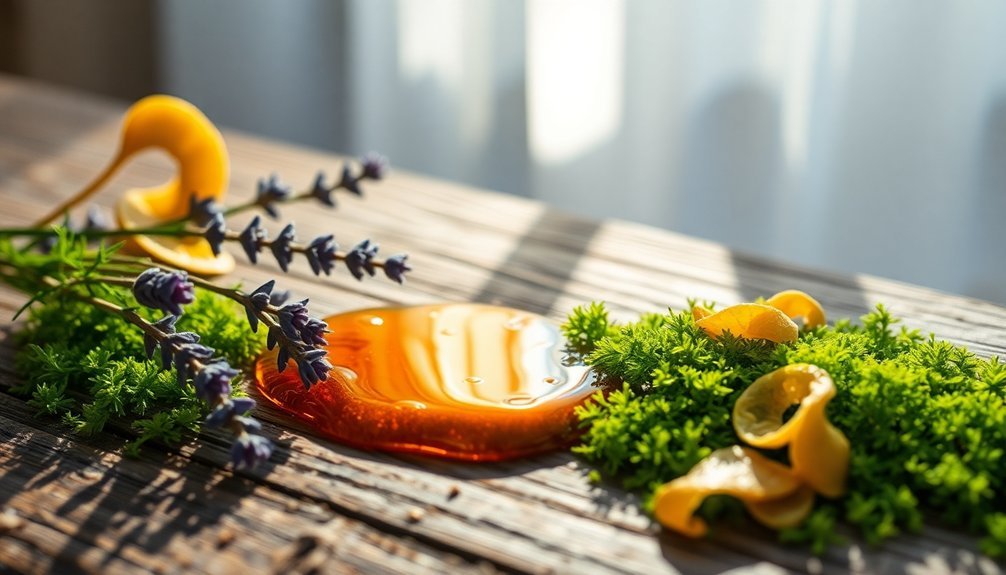
When sourcing raw oakmoss for your signature blend, look for high-quality absolutes that are IFRA-compliant and pre-diluted in organic grape alcohol for easier handling.
You'll want to start experimenting by combining oakmoss with classic companion oils like sandalwood, vetiver, or bergamot, keeping the oakmoss proportion lower initially as you discover your preferred ratios.
Through methodical testing of different combinations and concentrations, you can develop a unique blend that balances the deep, earthy notes of oakmoss with complementary essential oils while maintaining proper fixation.
Selecting Raw Oakmoss Sources
Creating a signature oakmoss blend starts with selecting the right raw materials. When sourcing raw oakmoss, you'll want to focus on species from the Evernia, Usnea, and Pseudevernia genera, which are known for their superior fragrance properties once extracted.
Look for these key indicators when selecting your oakmoss:
- Flat, leaf-like structures with a powdery appearance
- Growth on oak, fir, spruce, or pine trees
- Natural grayish-green coloration
- Signs of healthy lichen formation without damage
Remember that sustainable harvesting is essential. Source your oakmoss from established suppliers who practice ethical collection methods, particularly in Mediterranean regions where the finest varieties grow.
You'll find that oakmoss from old-growth forests often yields the best results, but always prioritize suppliers who maintain ecological balance in their harvesting practices.
Blending With Essential Oils
The art of blending oakmoss with essential oils opens up endless possibilities for crafting unique signature scents.
You'll find oakmoss pairs exceptionally well with woody oils like sandalwood, vetiver, and cedarwood to create deep, earthy base notes. For a more complex profile, try combining it with florals such as rose, jasmine, or lavender.
To add brightness to your blend, incorporate citrus oils like bergamot, lemon, or mandarin. These fresh notes beautifully contrast with oakmoss's rich undertones.
What makes oakmoss particularly valuable is its role as a fixative – it'll help your perfume last longer while harmonizing the various notes.
Whether you're creating a classic chypre or experimenting with oriental blends, oakmoss will anchor your composition and allow the scents to mature beautifully over time.
Testing Fragrance Ratios
Successful oakmoss blending starts with understanding IFRA safety guidelines and proper concentration ratios.
You'll need to test different concentrations to find your perfect balance while staying within safety limits.
When testing your oakmoss blend, use analytical methods like GC-MS to guarantee consistency and safety.
Consider these essential factors for ideal results:
- Apply to moisturized skin at pulse points for better longevity
- Test both EDP and EDT concentrations to determine perfect strength
- Store your blends in dark, cool places to maintain stability
- Monitor for oxidation to prevent skin reactions
Remember that natural perfumes typically last 2-6 hours, so you may need to adjust your ratios accordingly.
For precise measurements, use quantitative testing methods to verify your blend's composition and confirm it meets IFRA standards while achieving your desired fragrance profile.
Troubleshooting Common Perfume Longevity Issues
Many natural perfume enthusiasts face common longevity challenges that can be effectively addressed through proper techniques and understanding.
If you're experiencing quick scent fade, try applying your perfume to well-moisturized skin, as this creates a better foundation for fragrance retention. Don't rub the perfume in – let it dry naturally on your skin.
You can enhance longevity by layering your scent with matching body products and applying to areas where the fragrance won't be covered by clothing.
If you're using mainly fresh, citrusy notes, consider incorporating more base notes like woody elements to improve staying power.
For maximum impact, spray your perfume on accessories like scarves or in your hair, where it'll last longer than on skin.
Consider keeping a travel-sized bottle for touch-ups throughout the day.
Frequently Asked Questions
Can People With Tree Allergies Safely Use Oakmoss in Their Perfumes?
If you have tree allergies, you shouldn't use oakmoss in perfumes without consulting your doctor first. It can trigger allergic reactions, including skin rashes and respiratory symptoms. Consider patch testing before use.
How Does Synthetic Oakmoss Compare to Wild Oakmoss in Fragrance Longevity?
While synthetic oakmoss offers consistent longevity, you'll find that wild oakmoss provides deeper, more complex lasting power and acts as a superior natural fixative for your fragrances, though it's subject to stricter regulations.
What's the Maximum Amount of Oakmoss That's Safe for Skin?
You shouldn't exceed 0.1% oakmoss in your final product for safe skin application, as recommended by IFRA standards. That means using no more than 1 drop of oakmoss per 1,000 drops of your blend.
Does Oakmoss Lose Its Fixative Properties When Mixed With Citrus Oils?
No, oakmoss won't lose its fixative properties when mixed with citrus oils. You'll find it maintains its ability to stabilize and extend fragrance longevity, regardless of the oils you combine it with.
Can Oakmoss Be Used in Reed Diffusers and Room Sprays?
Yes, you can use oakmoss effectively in both reed diffusers and room sprays. It'll work as a fixative while adding earthy depth to your fragrances, especially when combined with other woody or citrus notes.
In Summary
You've now mastered the art of creating long-lasting natural perfumes with wild oakmoss. By following proper harvesting methods, using the right blending ratios, and implementing smart storage techniques, you'll enjoy your signature scent for hours. Don't forget to experiment with different application spots and layering methods. Remember, oakmoss isn't just a fragrance – it's nature's gift for making your natural perfumes endure.

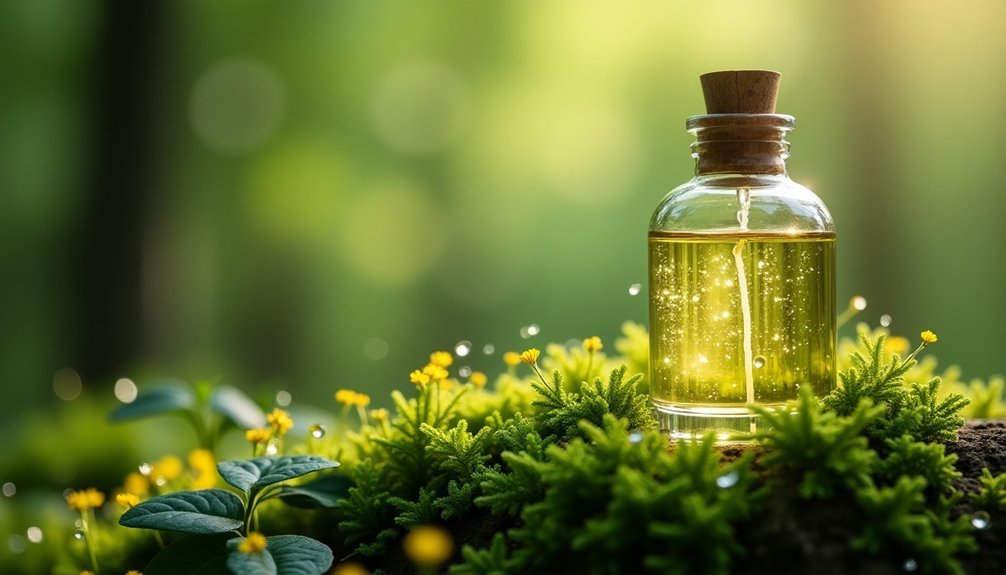
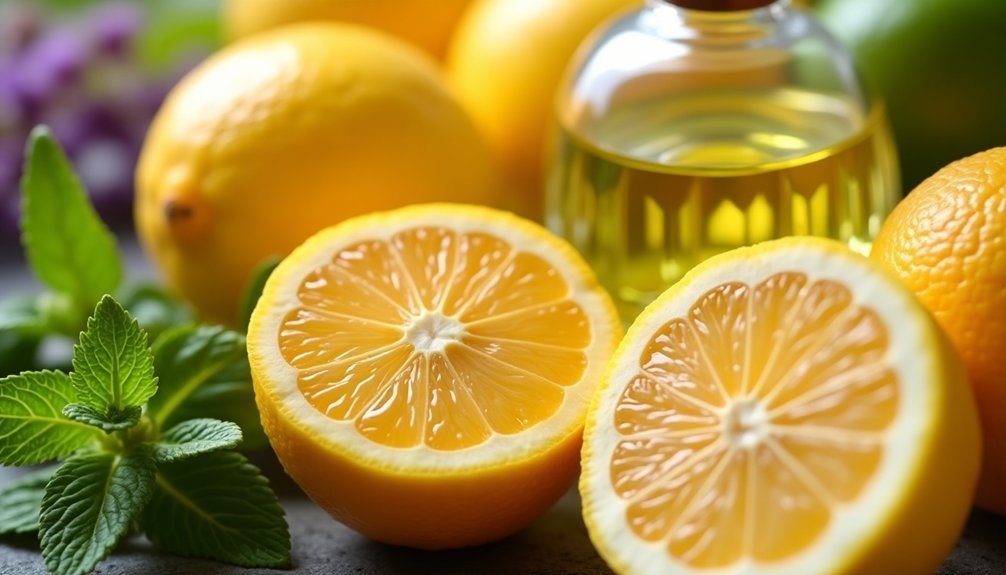
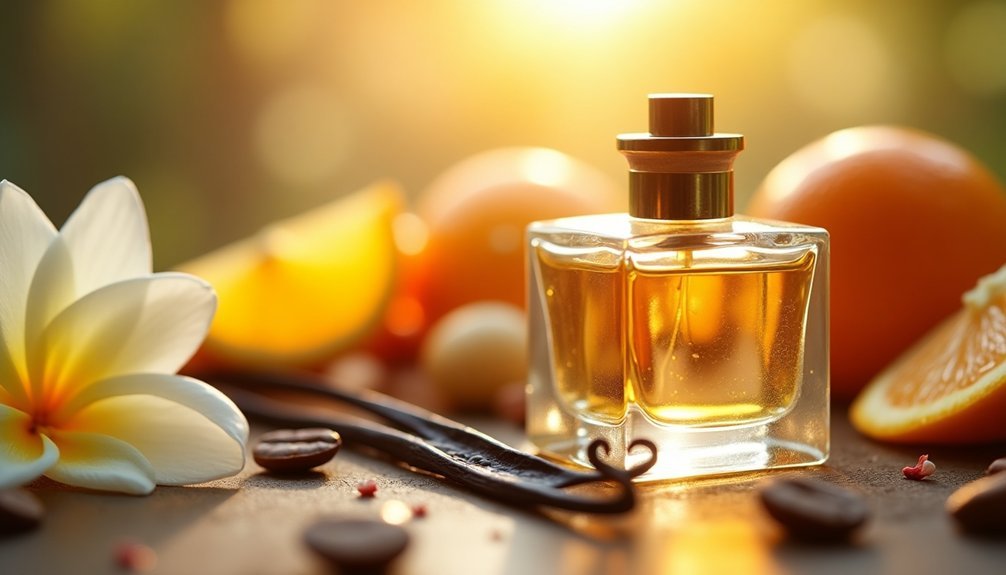

Leave a Reply